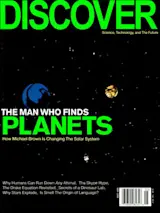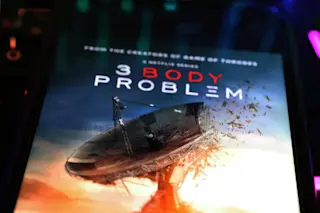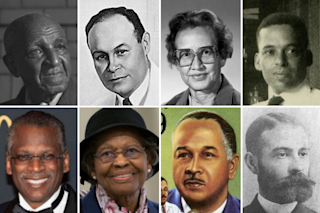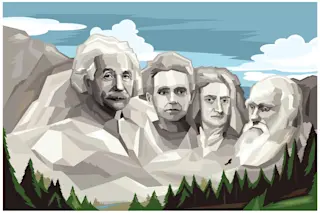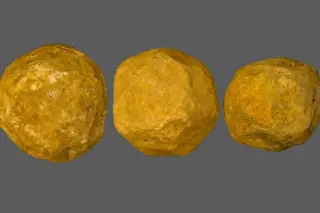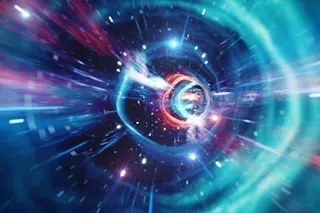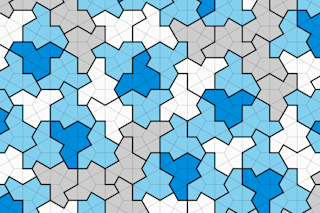Frank Drake spent many blissful hours as a boy musing about the possibility of intelligent beings out there amid the stars, but he was reluctant to bring the subject up with his parents or teachers because it seemed so far-fetched. The idea nagged at him when he completed his graduate studies in astronomy at Harvard University in 1958 and when he took a job at the newly founded National Radio Astronomy Observatory in Green Bank, West Virginia. If there are other technologically advanced societies in our galaxy, he theorized, they might be using means of communication similar to our own. So in the spring of 1960, he pointed Green Bank's 85-foot antenna toward nearby stars Tau Ceti and Epsilon Eridani, making the first attempt to eavesdrop on radio broadcasts from extraterrestrial civilizations.
The two-month listening program, dubbed Project Ozma, did not turn up any signs of intelligent life, but it did generate a lot of excitement among astronomers by demonstrating that humans had the means to receive signals from hundreds of trillions of miles away. A year later Drake invited a dozen astronomers, engineers, and biologists to Green Bank to try to quantify the likelihood that anybody out there in the Milky Way was transmitting. "It was a very exciting few days for everyone," Drake recalls. "For the first time they were able to discuss a subject that had fascinated them but which until then had seemed completely out of reach."
This month the SETI (Search for Extraterrestrial Intelligence) Institute, which Drake codirects, will begin a round-the-clock search for radio signals in our galaxy with the newly constructed Allen Telescope Array in the Cascade Mountains in Northern California. Underwritten by a $26 million donation by Microsoft cofounder Paul Allen, the array currently consists of 42 dishes, each 20 feet in diameter, which can be used to listen for signals from several stars in many different radio bands simultaneously.
The odds that the array will turn up any signs of intelligent life are expressed by a formula Drake developed to help focus the discussion at the Green Bank conference 45 years ago. Astronomers refer to it simply—and reverentially—as the Drake Equation:
N = R* fp ne fl fi fc L Drake's formula pushed the scientific knowledge of the 1960s to its limits, and then some. Optimists like Carl Sagan, who was present at the Green Bank meeting, thought that millions of detectable worlds could be afloat in the Milky Way's stellar seas. Pessimists—many of whom weighed in during the ensuing decade—reckoned a number closer to zero.
R* = the number of life-friendly stars born each year in our galaxy When Drake wrote his equation, this was the only factor based on hard data. In 1961 we knew that the Milky Way contained a few hundred billion stars and was 10 billion to 20 billion years old. If the galaxy has been hatching stars at roughly the same rate throughout its lifetime, about 20 new stars are formed every year. The Green Bank crowd figured that half of these stars would be sufficiently stable and long-lived to sustain an Earth-like planet, so they set R* at 10 per year.
Today we know from studies of distant galaxies that the rate of star birth declines over time. Because we are looking for civilizations that exist today, we are interested in stars born around the same time as the sun—5 billion years ago. By then, the rate of star formation had dropped to 5 to 10 stars per year, well below Drake's estimate. But that's not the end of the story.
The great majority of those stars are dim, low-mass runts known as red dwarfs. Such stars used to be dismissed because any planet orbiting close enough to stay warm gets locked into synchronous rotation: One hemisphere perpetually faces the star, growing sizzling hot, while the other side points away, becoming so cold that any atmosphere would freeze onto the surface. This dismal scenario now seems wrong. Current research suggests that winds would carry heat from one hemisphere to the other, leading to a temperate boundary where life could arise.
Adding all the red dwarfs into the pool means that today's estimate for R* is 5 to 10 per year—about the same as in 1961.
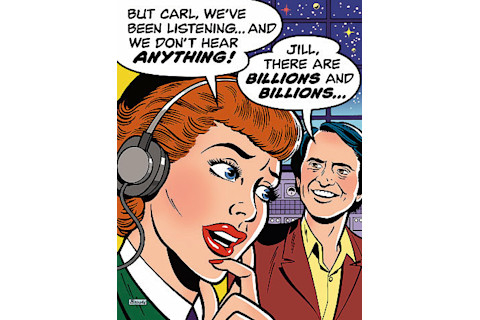
Lou Brooks
fp =the fraction of suitable stars that have planets
In 1961 astronomers had not yet discovered a single planet orbiting a star other than the sun. Nonetheless, the Green Bank conferees assumed on the basis of theory that planets were as common as flies and pegged the fraction of planet-endowed stars at about one-half. This was a Quasimodo-size hunch.
Today we can do better. Since 1995, several teams have found more than 170 worlds around other stars. About 5 to 10 percent of the studied stars have planets, but that's a lower limit: Current instruments cannot find bodies much smaller than Neptune, and they tend to miss ones in slow orbits. Meanwhile, planets keep showing up in places scientists once considered unlikely, such as around double stars. According to planet hunter Geoff Marcy of the University of California at Berkeley, "the fraction of stars having planets is probably as high as 90 percent."
ne = the number of habitable planets around each star
In days gone by, scientists would speak solemnly about our solar system's "habitable zone"—a theoretical region extending from Venus to Mars, but perhaps not encompassing either, where a planet would be the right temperature to have liquid water on its surface. Our solar system has exactly one planet (Earth) that makes the cut, leading people at the time to estimate ne as 1.
A major surprise of the past few decades has been the creeping realization that life is tougher than that, and several worlds in our solar system are gentler than once believed. Certain extremophiles (microbes that tolerate harsh conditions) have been found in seawater well above the boiling point, in polar ice, and even deep underground. Some of these microscopic tough guys do not need oxygen to survive and could do just fine in subterranean aquifers on Mars, in the seas that might slosh beneath the frozen surfaces of three of Jupiter's moons, or under the hydrocarbon-coated landscape of Saturn's moon Titan, where a trickle of heat from below might maintain pools of liquid water.
The old habitable zone idea is far too restrictive. The latest thinking says that each planetary system might include two, three, or more worlds that could support life.
fl = the fraction of habitable planets that have life
As we move to the right in Drake's equation, the values of the terms become increasingly uncertain. We haven't yet found a speck of evidence for biology on another world, so we have no objective way to judge whether life is a onetime fluke or a near-inevitable phenomenon.
More and more, the evidence points toward the latter. The basic ingredients for terrestrial life—a couple dozen simple molecules, including water—are now known to be abundant in the galactic clouds where stars are born. Recent experiments show that carbon dust grains, the kind that condense into planets, foster the creation of amino acids, the building blocks of proteins. Just about any planet anywhere would be pummeled and dusted with life's ingredients as it forms.
Drake's group conservatively estimated fl at 10 percent, a value that still seems reasonable. Obviously, that number would leap much higher if we found something as simple as alien pond scum (or its remains) on Mars or another nearby world.
fi = the fraction of inhabited worlds that develop intelligent life Stephen Jay Gould famously described humans as an evolutionary accident and argued that had Earth's history been slightly different, we would never have appeared. But if we weren't here, would evolution eventually have produced some other species of thinking beings instead? In other words, is intelligence sufficiently useful that it will sooner or later appear?
One way to answer the question is to see if other terrestrial species have tended toward intelligence. Studies of fossil dolphin skulls show an inclination toward greater brainpower over the last 50 million years. Numerous other creatures, especially some whales and birds, also show a pattern of increasing brain size relative to their bodies over the past tens of millions of years. Four decades ago, Drake and company guessed that fi must be close to 1. Today there's evidence that the path of evolution may often lead to the development of intelligence.
fc = fraction of intelligent species that develop radio technology Just because you are smart, does that mean you will end up broadcasting your news and views into space? The answer depends as much on sociology as on evolutionary biology and is as speculative today as it was in 1961. Very few societies on Earth developed science as we know it today. On the other hand, the number is not zero—the Greeks, the Chinese, and the Maya did, among others. Once invented, science proved so useful that it spread like mold on a petri dish.
It seems obvious that if a species has the brainpower for speech, along with the sort of appendages that can manipulate a pair of pliers, it will eventually blunder into science, technology, and radio. Some societies may get stuck using nothing more than the wheel or the abacus, but it takes only one scientist to figure out how electricity and magnetism work, as James Clerk Maxwell did in 1864. Within a generation, hordes of tinkerers were fiddling with crude radio sets; two generations after that, Drake had access to a radio dish that could pick up signals from light-years away. So fc was, and still is, assumed to be close to 100 percent.
L = the average time span during which civilizations transmit detectable signals Even if technological societies are born all the time, we're never going to find them if they quickly destroy themselves. During the cold war, many researchers worried that the lifetime of a technological civilization might be distressingly short, maybe a couple of centuries or less. The level of expertise needed to build a radio is just a little less than that required to build a nuclear weapon, they argued, so just as a civilization starts tuning up its transmitters, some internal spat causes it to go off the air in a storm of mushroom clouds. In the last decade this dystopian attitude has eased somewhat, replaced by a different concern. Television transmitters are quickly giving way to fiber-optic cables and direct-broadcast satellites. Earth could soon become radio quiet—a technological evolution that might occur on an alien's world too.
It sounds as if L is destined to be short, no matter what: Either technically adept societies self-destruct, or they go mute. But this sobering view is based on human experience of only about 60 years. Things could change, and change drastically. When a technological civilization develops rockets, the colonization of nearby space will most likely follow. Perhaps aliens will build a solar-system-wide GPS that belches radio signals willy-nilly. Maybe they broadcast an asteroid weather report. At any rate, it's reckless to assume they won't have powerful transmitters.
Drake set the value of L at 10,000 years. Others have made estimates both drastically shorter and longer, but this is the one term of the equation where our guesses are truly guesses.
N: And the answer is . . . When Frank Drake and his compatriots plugged their best guesses into the equation, they came up with an answer in the thousands—meaning that intelligent life is common enough that there should be a civilization within about 1,000 light-years of Earth.
The distinguished dozen in 1961 were both prescient and plain lucky. With all the additional information available today, Drake's estimate remains convincing. In fact, as Drake says, "many of our assumptions of those days have become established facts."
Things might easily have turned out otherwise. Astronomers could have discovered that planets are scarce or that potential habitats are rare. Instead, our growing understanding of the universe justifies Drake's optimism and occasionally goes it one better. That's why, despite 45 years of null results, many of us are more convinced than ever that we are not alone.



